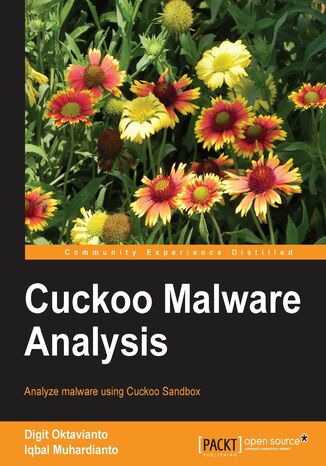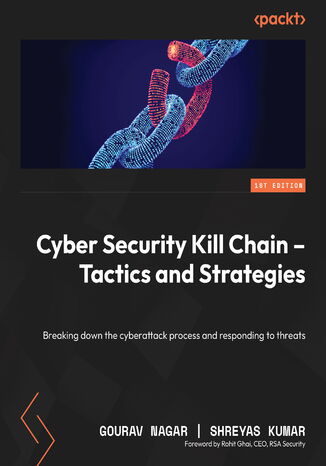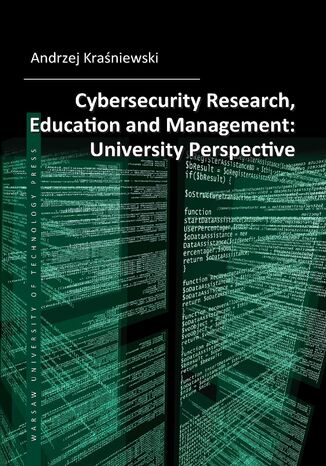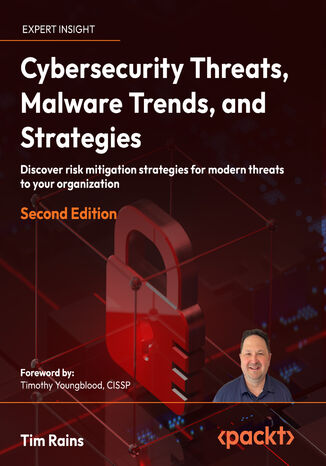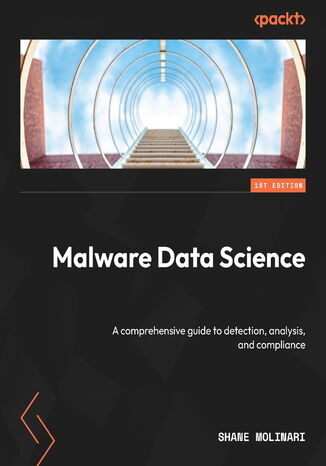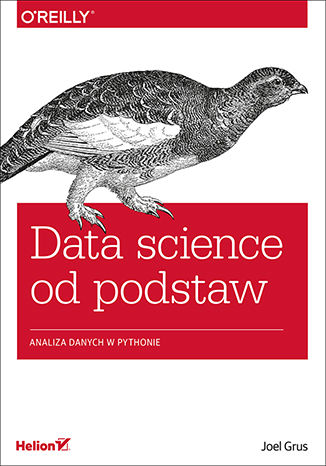Kategorie
Ebooki
-
Biznes i ekonomia
- Bitcoin
- Bizneswoman
- Coaching
- Controlling
- E-biznes
- Ekonomia
- Finanse
- Giełda i inwestycje
- Kompetencje osobiste
- Komputer w biurze
- Komunikacja i negocjacje
- Mała firma
- Marketing
- Motywacja
- Multimedialne szkolenia
- Nieruchomości
- Perswazja i NLP
- Podatki
- Polityka społeczna
- Poradniki
- Prezentacje
- Przywództwo
- Public Relation
- Raporty, analizy
- Sekret
- Social Media
- Sprzedaż
- Start-up
- Twoja kariera
- Zarządzanie
- Zarządzanie projektami
- Zasoby ludzkie (HR)
-
Dla dzieci
-
Dla młodzieży
-
Edukacja
-
Encyklopedie, słowniki
-
E-prasa
- Architektura i wnętrza
- BHP
- Biznes i Ekonomia
- Dom i ogród
- E-Biznes
- Ekonomia i finanse
- Ezoteryka
- Finanse
- Finanse osobiste
- Firma
- Fotografia
- Informatyka
- Kadry i płace
- Kobieca
- Komputery, Excel
- Księgowość
- Kultura i literatura
- Naukowe i akademickie
- Ochrona środowiska
- Opiniotwórcze
- Oświata
- Podatki
- Podróże
- Psychologia
- Religia
- Rolnictwo
- Rynek książki i prasy
- Transport i Spedycja
- Zdrowie i uroda
-
Historia
-
Informatyka
- Aplikacje biurowe
- Bazy danych
- Bioinformatyka
- Biznes IT
- CAD/CAM
- Digital Lifestyle
- DTP
- Elektronika
- Fotografia cyfrowa
- Grafika komputerowa
- Gry
- Hacking
- Hardware
- IT w ekonomii
- Pakiety naukowe
- Podręczniki szkolne
- Podstawy komputera
- Programowanie
- Programowanie mobilne
- Serwery internetowe
- Sieci komputerowe
- Start-up
- Systemy operacyjne
- Sztuczna inteligencja
- Technologia dla dzieci
- Webmasterstwo
-
Inne
-
Języki obce
-
Kultura i sztuka
-
Lektury szkolne
-
Literatura
- Antologie
- Ballada
- Biografie i autobiografie
- Dla dorosłych
- Dramat
- Dzienniki, pamiętniki, listy
- Epos, epopeja
- Esej
- Fantastyka i science-fiction
- Felietony
- Fikcja
- Humor, satyra
- Inne
- Klasyczna
- Kryminał
- Literatura faktu
- Literatura piękna
- Mity i legendy
- Nobliści
- Nowele
- Obyczajowa
- Okultyzm i magia
- Opowiadania
- Pamiętniki
- Podróże
- Poemat
- Poezja
- Polityka
- Popularnonaukowa
- Powieść
- Powieść historyczna
- Proza
- Przygodowa
- Publicystyka
- Reportaż
- Romans i literatura obyczajowa
- Sensacja
- Thriller, Horror
- Wywiady i wspomnienia
-
Nauki przyrodnicze
-
Nauki społeczne
-
Podręczniki szkolne
-
Popularnonaukowe i akademickie
- Archeologia
- Bibliotekoznawstwo
- Filmoznawstwo
- Filologia
- Filologia polska
- Filozofia
- Finanse i bankowość
- Geografia
- Gospodarka
- Handel. Gospodarka światowa
- Historia i archeologia
- Historia sztuki i architektury
- Kulturoznawstwo
- Lingwistyka
- Literaturoznawstwo
- Logistyka
- Matematyka
- Medycyna
- Nauki humanistyczne
- Pedagogika
- Pomoce naukowe
- Popularnonaukowa
- Pozostałe
- Psychologia
- Socjologia
- Teatrologia
- Teologia
- Teorie i nauki ekonomiczne
- Transport i spedycja
- Wychowanie fizyczne
- Zarządzanie i marketing
-
Poradniki
-
Poradniki do gier
-
Poradniki zawodowe i specjalistyczne
-
Prawo
- BHP
- Historia
- Kodeks drogowy. Prawo jazdy
- Nauki prawne
- Ochrona zdrowia
- Ogólne, kompendium wiedzy
- Podręczniki akademickie
- Pozostałe
- Prawo budowlane i lokalowe
- Prawo cywilne
- Prawo finansowe
- Prawo gospodarcze
- Prawo gospodarcze i handlowe
- Prawo karne
- Prawo karne. Przestępstwa karne. Kryminologia
- Prawo międzynarodowe
- Prawo międzynarodowe i zagraniczne
- Prawo ochrony zdrowia
- Prawo oświatowe
- Prawo podatkowe
- Prawo pracy i ubezpieczeń społecznych
- Prawo publiczne, konstytucyjne i administracyjne
- Prawo rodzinne i opiekuńcze
- Prawo rolne
- Prawo socjalne, prawo pracy
- Prawo Unii Europejskiej
- Przemysł
- Rolne i ochrona środowiska
- Słowniki i encyklopedie
- Zamówienia publiczne
- Zarządzanie
-
Przewodniki i podróże
- Afryka
- Albumy
- Ameryka Południowa
- Ameryka Środkowa i Północna
- Australia, Nowa Zelandia, Oceania
- Austria
- Azja
- Bałkany
- Bliski Wschód
- Bułgaria
- Chiny
- Chorwacja
- Czechy
- Dania
- Egipt
- Estonia
- Europa
- Francja
- Góry
- Grecja
- Hiszpania
- Holandia
- Islandia
- Litwa
- Łotwa
- Mapy, Plany miast, Atlasy
- Miniprzewodniki
- Niemcy
- Norwegia
- Podróże aktywne
- Polska
- Portugalia
- Pozostałe
- Przewodniki po hotelach i restauracjach
- Rosja
- Rumunia
- Słowacja
- Słowenia
- Szwajcaria
- Szwecja
- Świat
- Turcja
- Ukraina
- Węgry
- Wielka Brytania
- Włochy
-
Psychologia
- Filozofie życiowe
- Kompetencje psychospołeczne
- Komunikacja międzyludzka
- Mindfulness
- Ogólne
- Perswazja i NLP
- Psychologia akademicka
- Psychologia duszy i umysłu
- Psychologia pracy
- Relacje i związki
- Rodzicielstwo i psychologia dziecka
- Rozwiązywanie problemów
- Rozwój intelektualny
- Sekret
- Seksualność
- Uwodzenie
- Wygląd i wizerunek
- Życiowe filozofie
-
Religia
-
Sport, fitness, diety
-
Technika i mechanika
Audiobooki
-
Biznes i ekonomia
- Bitcoin
- Bizneswoman
- Coaching
- Controlling
- E-biznes
- Ekonomia
- Finanse
- Giełda i inwestycje
- Kompetencje osobiste
- Komunikacja i negocjacje
- Mała firma
- Marketing
- Motywacja
- Nieruchomości
- Perswazja i NLP
- Podatki
- Polityka społeczna
- Poradniki
- Prezentacje
- Przywództwo
- Public Relation
- Sekret
- Social Media
- Sprzedaż
- Start-up
- Twoja kariera
- Zarządzanie
- Zarządzanie projektami
- Zasoby ludzkie (HR)
-
Dla dzieci
-
Dla młodzieży
-
Edukacja
-
Encyklopedie, słowniki
-
E-prasa
-
Historia
-
Informatyka
-
Inne
-
Języki obce
-
Kultura i sztuka
-
Lektury szkolne
-
Literatura
- Antologie
- Ballada
- Biografie i autobiografie
- Dla dorosłych
- Dramat
- Dzienniki, pamiętniki, listy
- Epos, epopeja
- Esej
- Fantastyka i science-fiction
- Felietony
- Fikcja
- Humor, satyra
- Inne
- Klasyczna
- Kryminał
- Literatura faktu
- Literatura piękna
- Mity i legendy
- Nobliści
- Nowele
- Obyczajowa
- Okultyzm i magia
- Opowiadania
- Pamiętniki
- Podróże
- Poezja
- Polityka
- Popularnonaukowa
- Powieść
- Powieść historyczna
- Proza
- Przygodowa
- Publicystyka
- Reportaż
- Romans i literatura obyczajowa
- Sensacja
- Thriller, Horror
- Wywiady i wspomnienia
-
Nauki przyrodnicze
-
Nauki społeczne
-
Popularnonaukowe i akademickie
-
Poradniki
-
Poradniki zawodowe i specjalistyczne
-
Prawo
-
Przewodniki i podróże
-
Psychologia
- Filozofie życiowe
- Komunikacja międzyludzka
- Mindfulness
- Ogólne
- Perswazja i NLP
- Psychologia akademicka
- Psychologia duszy i umysłu
- Psychologia pracy
- Relacje i związki
- Rodzicielstwo i psychologia dziecka
- Rozwiązywanie problemów
- Rozwój intelektualny
- Sekret
- Seksualność
- Uwodzenie
- Wygląd i wizerunek
- Życiowe filozofie
-
Religia
-
Sport, fitness, diety
-
Technika i mechanika
Kursy video
-
Bazy danych
-
Big Data
-
Biznes, ekonomia i marketing
-
Cyberbezpieczeństwo
-
Data Science
-
DevOps
-
Dla dzieci
-
Elektronika
-
Grafika/Wideo/CAX
-
Gry
-
Microsoft Office
-
Narzędzia programistyczne
-
Programowanie
-
Rozwój osobisty
-
Sieci komputerowe
-
Systemy operacyjne
-
Testowanie oprogramowania
-
Urządzenia mobilne
-
UX/UI
-
Web development
-
Zarządzanie
Podcasty
Inne
Configuring Windows Server Hybrid Advanced Services Exam Ref AZ-801 helps you master various cloud and data center management concepts in detail, helping you grow your expertise in configuring and managing Windows Server in on-premises, hybrid, and cloud-based workloads. Throughout the book, you'll cover all the topics needed to pass the AZ-801 exam and use the skills you acquire to advance in your career.With this book, you’ll learn how to secure your on-premises Windows Server resources and Azure IaaS workloads. First, you’ll explore the potential vulnerabilities of your resources and learn how to fix or mitigate them. Next, you'll implement high availability Windows Server virtual machine workloads with Hyper-V Replica, Windows Server Failover Clustering, and Windows File Server.You’ll implement disaster recovery and server migration of Windows Server in on-premises and hybrid environments. You’ll also learn how to monitor and troubleshoot Windows Server environments.By the end of this book, you'll have gained the knowledge and skills required to ace the AZ-801 exam, and you'll have a handy, on-the-job desktop reference guide.
Cuckoo Malware Analysis. Analyze malware using Cuckoo Sandbox
Digit Oktavianto, Iqbal Muhardianto
Cuckoo Sandbox is a leading open source automated malware analysis system. This means that you can throw any suspicious file at it and, in a matter of seconds, Cuckoo will provide you with some detailed results outlining what said file did when executed inside an isolated environment.Cuckoo Malware Analysis is a hands-on guide that will provide you with everything you need to know to use Cuckoo Sandbox with added tools like Volatility, Yara, Cuckooforcanari, Cuckoomx, Radare, and Bokken, which will help you to learn malware analysis in an easier and more efficient way.Cuckoo Malware Analysis will cover basic theories in sandboxing, automating malware analysis, and how to prepare a safe environment lab for malware analysis. You will get acquainted with Cuckoo Sandbox architecture and learn how to install Cuckoo Sandbox, troubleshoot the problems after installation, submit malware samples, and also analyze PDF files, URLs, and binary files. This book also covers memory forensics – using the memory dump feature, additional memory forensics using Volatility, viewing result analyses using the Cuckoo analysis package, and analyzing APT attacks using Cuckoo Sandbox, Volatility, and Yara.Finally, you will also learn how to screen Cuckoo Sandbox against VM detection and how to automate the scanning of e-mail attachments with Cuckoo.
Gourav Nagar, Shreyas Kumar, Rohit Ghai
Gain a strategic edge in cybersecurity by mastering the systematic approach to identifying and responding to cyber threats through a detailed exploration of the cyber kill chain framework. This guide walks you through each stage of the attack, from reconnaissance and weaponization to exploitation, command and control (C2), and actions on objectives. Written by cybersecurity leaders Gourav Nagar, Director of Information Security at BILL Holdings, with prior experience at Uber and Apple, and Shreyas Kumar, Professor of Practice at Texas A&M, and former expert at Adobe and Oracle, this book helps enhance your cybersecurity posture. You’ll gain insight into the role of threat intelligence in boosting the cyber kill chain, explore the practical applications of the framework in real-world scenarios, and see how AI and machine learning are revolutionizing threat detection. You’ll also learn future-proofing strategies and get ready to counter sophisticated threats like supply chain attacks and living-off-the-land attacks, and the implications of quantum computing on cybersecurity.By the end of this book, you’ll have gained the strategic understanding and skills needed to protect your organization's digital infrastructure in the ever-evolving landscape of cybersecurity.
CYBERPRZEMOC szczególnym zagrożeniem społeczeństwa informacyjnego
Marian Kowalewski, Marek Jakubiak
Wśród zagrożeń w cyberprzestrzeni szczególnie groźne jest zagrożenie cyberprzemocy – zagrożenie, które nie zawsze się dostrzega i wielokrotnie wręcz lekceważy, a które coraz częściej dotyka nas wszystkich. Najogólniej ujmując, cyberprzemoc możemy sprowadzić do prześladowania, zastraszania, szantażowania, nękania, obrażania i wyśmiewania innych osób lub grup za pośrednictwem współczesnych technik i technologii ICT. Prezentowana publikacja jest zbiorem wyników badań pracowników naukowo-dydaktycznych Zakładu Nauk o Administracji i Bezpieczeństwa w Administracji z Wydziału Administracji i Nauk Społecznych Politechniki Warszawskiej, które są upowszechniane i wykładane w procesie dydaktycznym.
Cybersecurity Research, Education and Management: University Perspective
In this paper, we focus on those aspects of cybersecurity that are most relevant to universities, intending to provide academic communities with some knowledge that might be useful in their research, education and administration activities related to cybersecurity. The remaining part of the paper is organised as follows. In Section 2, we present basic characteristics of cybersecurity research, its scope and organisation, focusing on initiatives and activities relevant to universities. In Section 3, we show the landscape of cybersecurity education at universities, focusing on competencies acquired by beneficiaries of the educational provision. In Section 4, we discuss challenges faced by universities seen as institutions that have to assure a sufficient level of cybersecurity for their operation. Section 5 presents – as a case study – the developments in cybersecurity research, education and organization taking place at the Warsaw University of Technology. We conclude the paper with a few observations regarding the future developments in cybersecurity, relevant to universities.
Tim Rains, Timothy Youngblood CISSP
Tim Rains is Microsoft's former Global Chief Security Advisor and Amazon Web Services’ former Global Security Leader for Worldwide Public Sector. He has spent the last two decades advising private and public sector organizations all over the world on cybersecurity strategies.Cybersecurity Threats, Malware Trends, and Strategies, Second Edition builds upon the success of the first edition that has helped so many aspiring CISOs, and cybersecurity professionals understand and develop effective data-driven cybersecurity strategies for their organizations. In this edition, you’ll examine long-term trends in vulnerability disclosures and exploitation, regional differences in malware infections and the socio-economic factors that underpin them, and how ransomware evolved from an obscure threat to the most feared threat in cybersecurity. You’ll also gain valuable insights into the roles that governments play in cybersecurity, including their role as threat actors, and how to mitigate government access to data. The book concludes with a deep dive into modern approaches to cybersecurity using the cloud.By the end of this book, you will have a better understanding of the threat landscape, how to recognize good Cyber Threat Intelligence, and how to measure the effectiveness of your organization's cybersecurity strategy.
In today's world full of online threats, the complexity of harmful software presents a significant challenge for detection and analysis. This insightful guide will teach you how to apply the principles of data science to online security, acting as both an educational resource and a practical manual for everyday use.Data Science for Malware Analysis starts by explaining the nuances of malware, from its lifecycle to its technological aspects before introducing you to the capabilities of data science in malware detection by leveraging machine learning, statistical analytics, and social network analysis. As you progress through the chapters, you’ll explore the analytical methods of reverse engineering, machine language, dynamic scrutiny, and behavioral assessments of malicious software. You’ll also develop an understanding of the evolving cybersecurity compliance landscape with regulations such as GDPR and CCPA, and gain insights into the global efforts in curbing cyber threats.By the end of this book, you’ll have a firm grasp on the modern malware lifecycle and how you can employ data science within cybersecurity to ward off new and evolving threats.
Data science od podstaw. Analiza danych w Pythonie
Współczesne ogromne zbiory danych zawierają odpowiedzi na prawie każde pytanie. Równocześnie nauka o danych jest dziedziną, która cokolwiek onieśmiela. Znajduje się gdzieś pomiędzy subtelnymi umiejętnościami hakerskimi, twardą wiedzą z matematyki i statystyki a merytoryczną znajomością zagadnień z danej branży. Co więcej, dziedzina ta niezwykle dynamicznie się rozwija. Trud włożony w naukę o danych niewątpliwie się jednak opłaca: biegły analityk danych może liczyć na dobrze płatną, inspirującą i bardzo atrakcyjną pracę. Dzięki tej książce opanujesz najważniejsze zagadnienia związane z matematyką i statystyką, będziesz także rozwijać umiejętności hakerskie. W ten sposób zyskasz podstawy pozwalające na rozpoczęcie przygody z analizą danych. Gruntownie zapoznasz się z potrzebnymi narzędziami i algorytmami. Pozwoli Ci to lepiej zrozumieć ich działanie. Poszczególne przykłady, którymi zilustrowano omawiane zagadnienia, są przejrzyste, dobrze opisane i zrozumiałe. Podczas lektury książki poznasz biblioteki, które umożliwią zaimplementowanie omówionych technik podczas analizy dużych zbiorów danych. Szybko się przekonasz, że aby zostać analitykiem danych, wystarczy odrobina ciekawości, sporo chęci, mnóstwo ciężkiej pracy i... ta książka. Najważniejsze zagadnienia: Praktyczne wprowadzenie do Pythona Podstawy algebry liniowej, statystyki i rachunku prawdopodobieństwa w analizie danych Podstawy uczenia maszynowego Implementacje algorytmów modeli, w tym naiwny klasyfikator bayesowski, regresja liniowa, regresja logistyczna, drzewa decyzyjne, sieci neuronowe i grupowanie, MapReduce Systemy rekomendacji i mechanizmy przetwarzania języka naturalnego Korzystanie z mediów społecznościowych i baz danych. Python. Wyciśniesz z danych każdą kroplę wiedzy!


